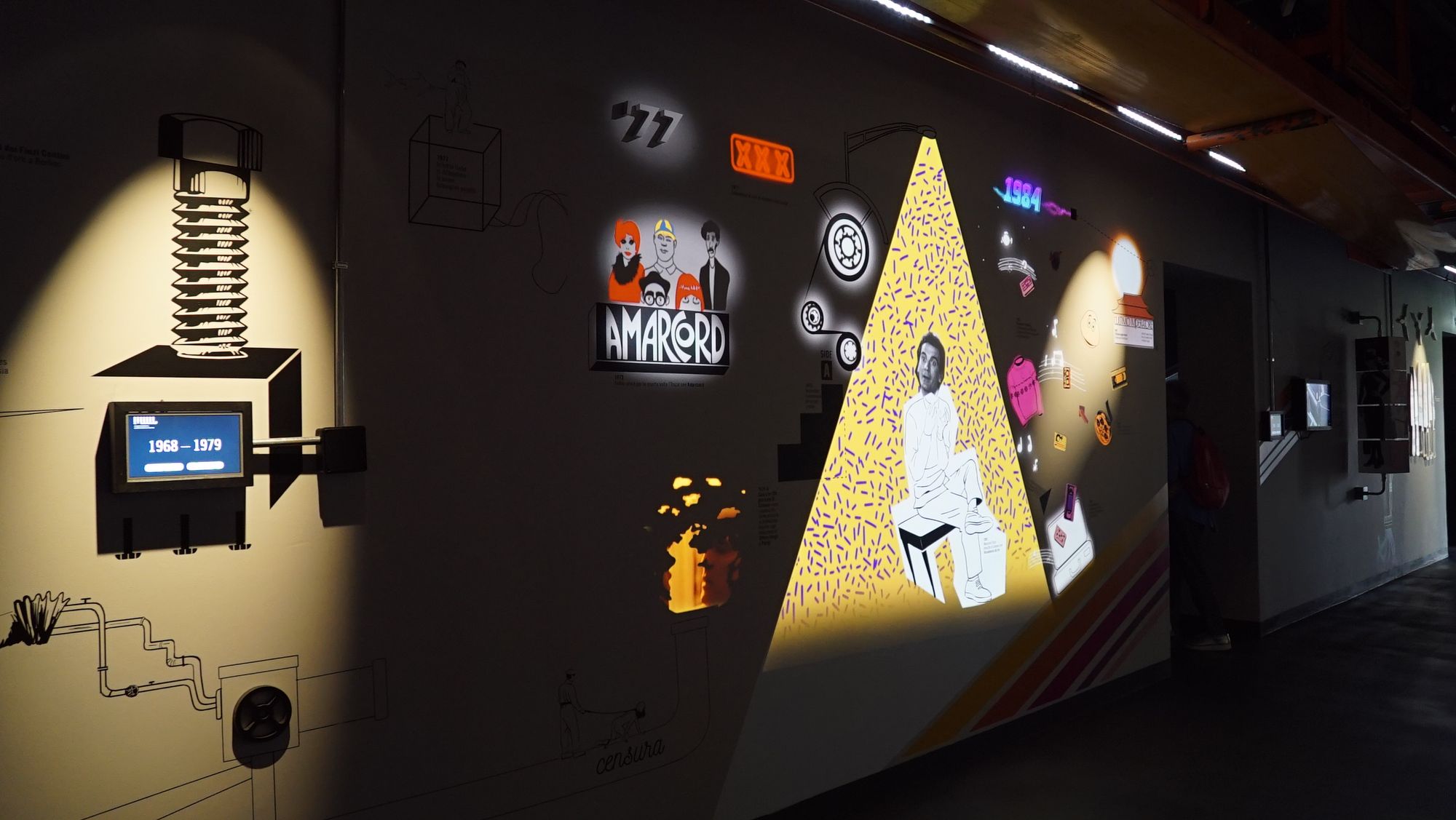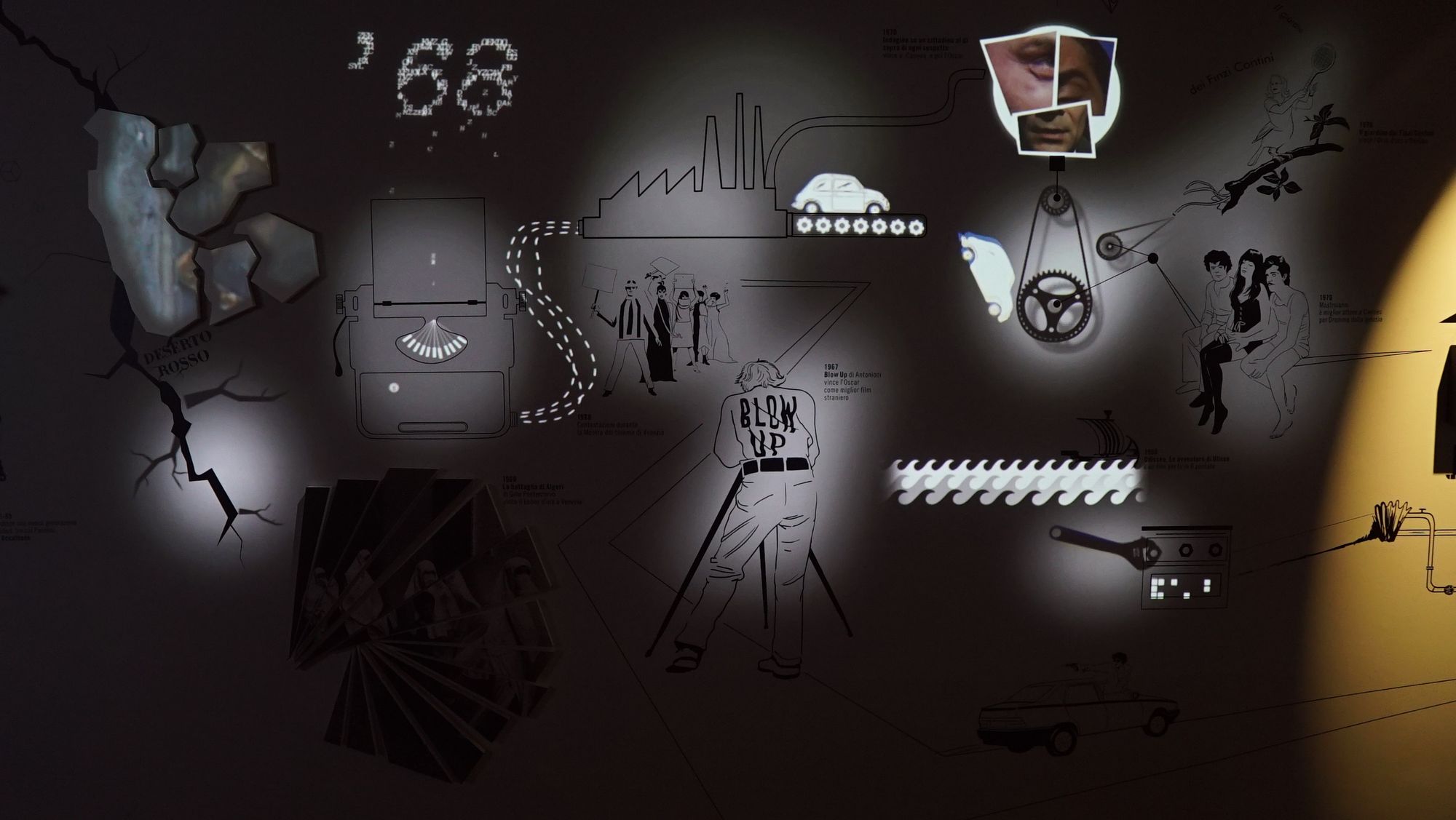A Day at Cinecittà Studios
In this article, I provide an overview of my day at the iconic Italian film studio, Cinecittà.
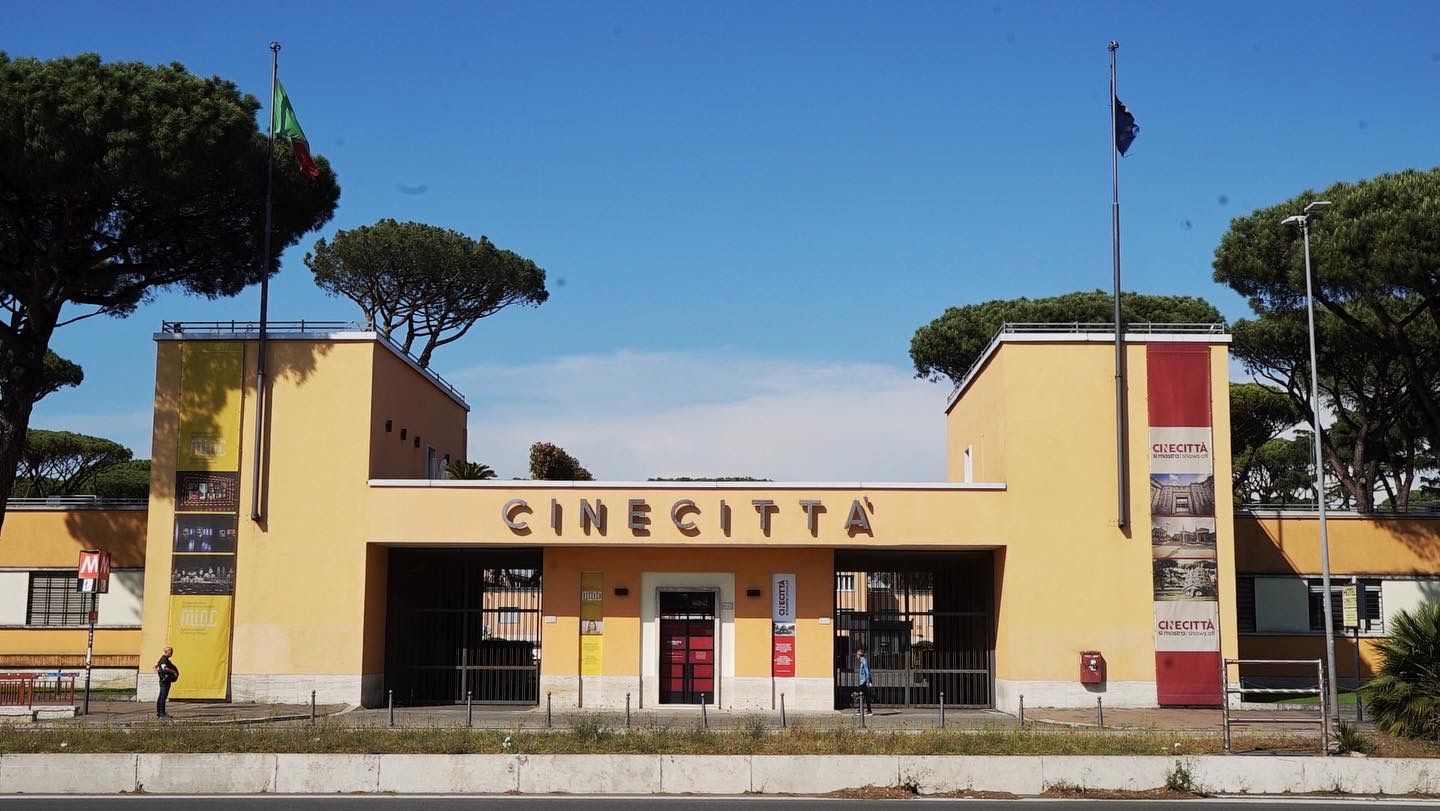
Earlier this year I broke my 2.5-year travel fast by taking a trip to Italy. I visited several locations, and one was Rome. There were various things that I wanted to do whilst in the Eternal City, but at the top of my list was a day at Cinecittà, the iconic film studio that I had learnt so much about as a film student, and where such productions as Fellini’s La Dolce Vita (1960), Wyler’s Ben-Hur (1959), and Scorsese’s Gangs of New York (2002) were filmed.
Every year members of the public are able to visit Cinecittà Studios to learn more about its rich history through a studio tour and various exhibitions housed onsite. As per the studio’s website, this “cultural initiative” is called “Cinecittà si Mostra” or “Cinecittà Shows Off”. In this article, I’ll be providing an overview of my day at the studios and what you can expect on a typical visit.
Tickets to the Studio must be booked in advance and you can find instructions on how to do so through the “Cinecittà si Mostra” website. Depending on the type of ticket that you purchase, a visit to Cinecittà consists of 2 to 4 components:
1) Guided Set Tour
One of the ticketed options that you can buy includes a guided tour of the exterior sets that have been built and preserved at Cinecittà. These tours are available in Italian, and on certain days, English. Unless otherwise stated, visitors can expect to see three large permanent sets:
Ancient Rome
This 10-acre set was built for the HBO series Rome, and recreates the ancient city as it existed at the time of Julius Caesar. As per the Cinecittà si Mostra website, this set:
"presents the classic civil and religious buildings of the Roman Forum. The supporting structures are covered with wooden panels and fiberglass plates. The monumental set is characterized by a striking mix of colors: The bold hues of red, blue and green, along with the vibrant décor, help visitors visualize what the now whitened ruins actually looked like in the days of the Roman Republic."
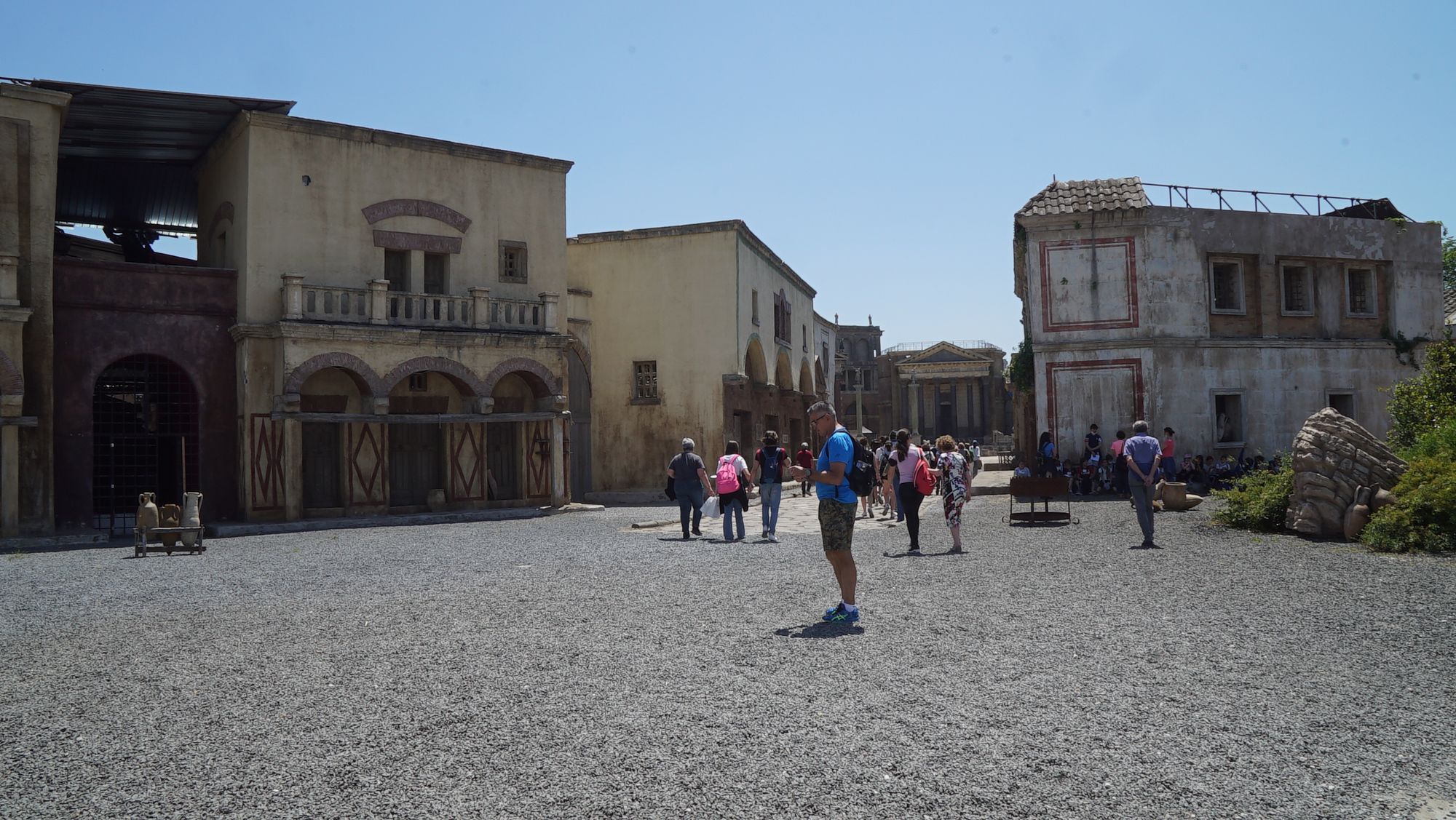
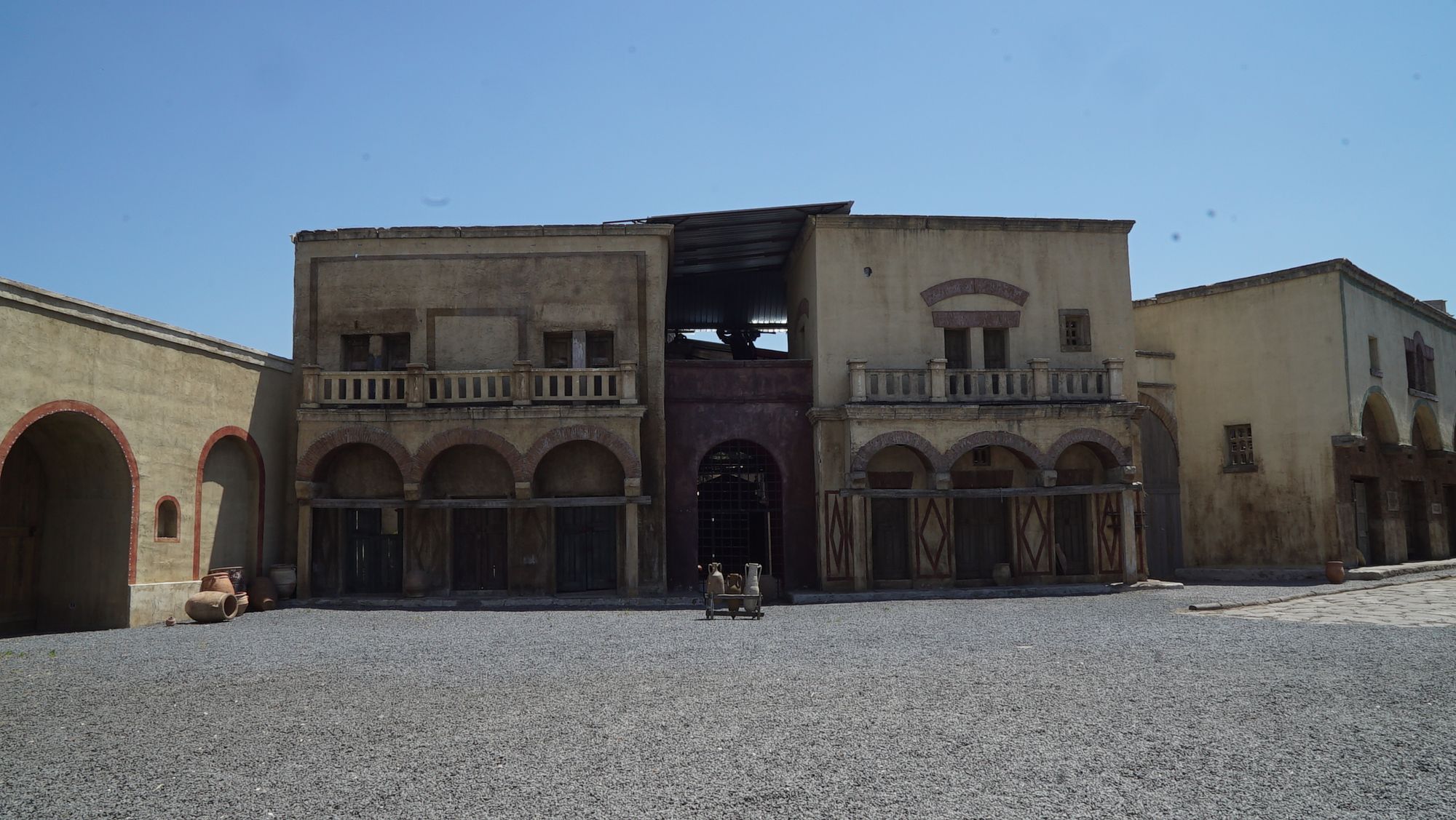
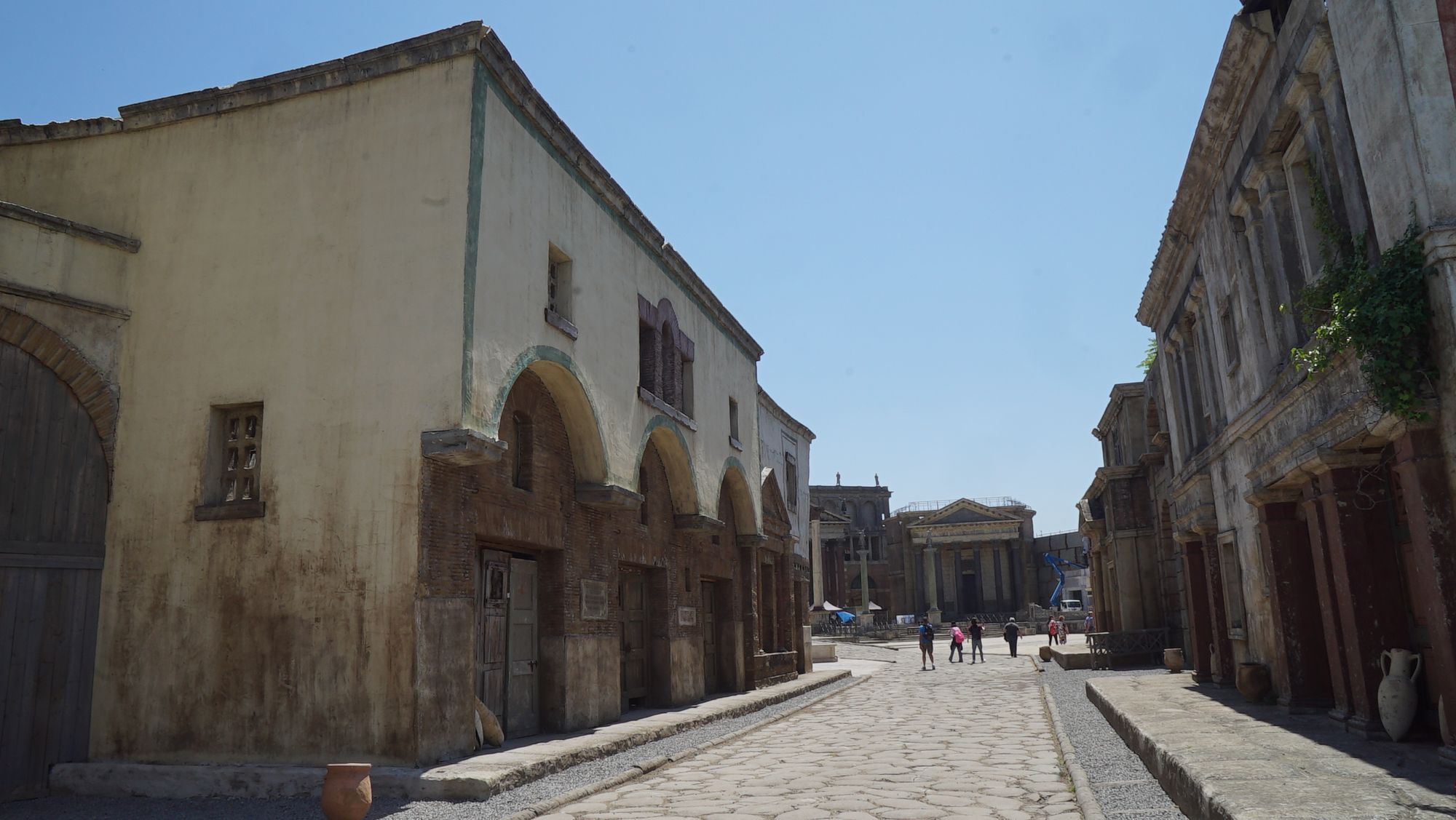
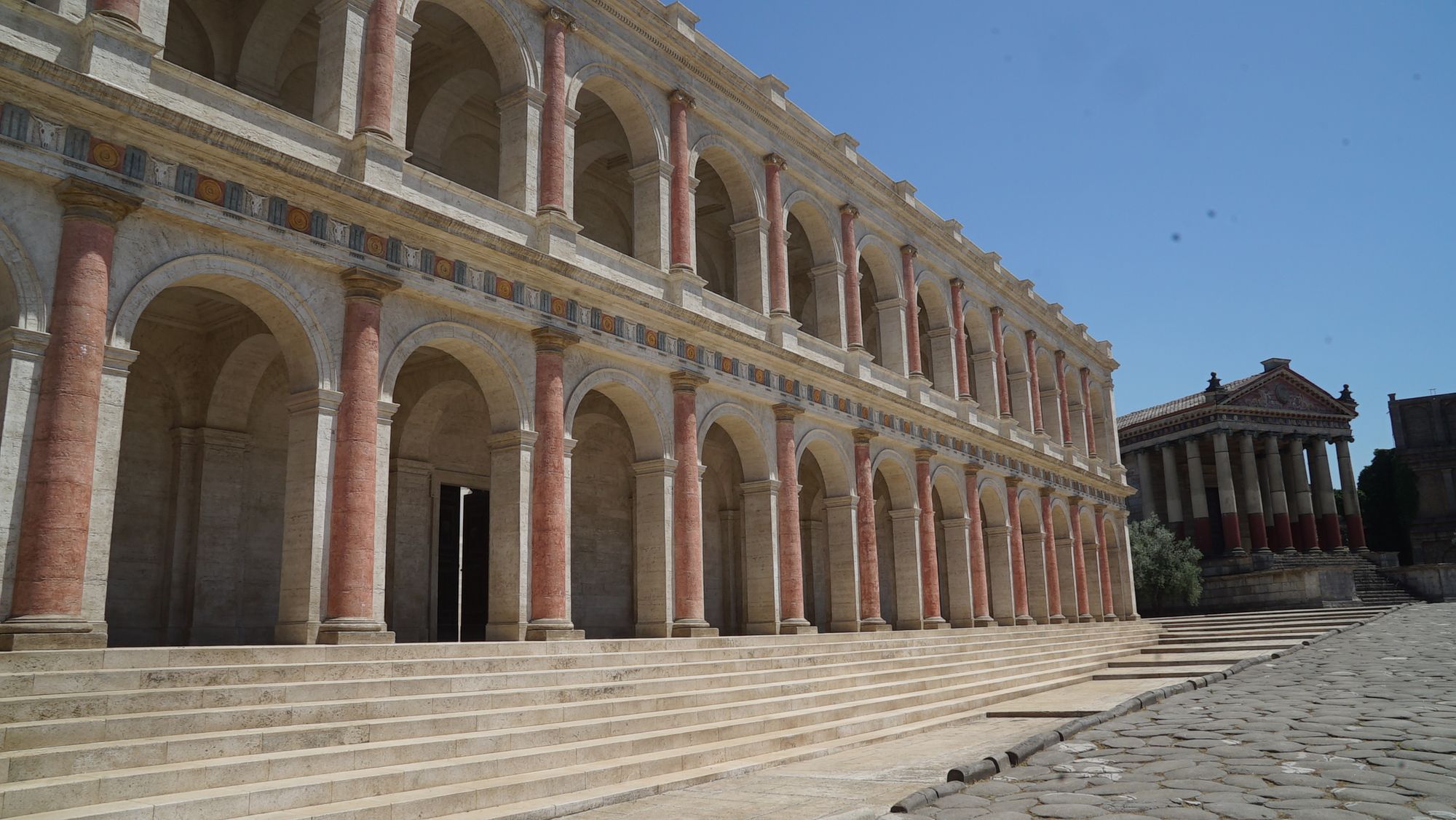
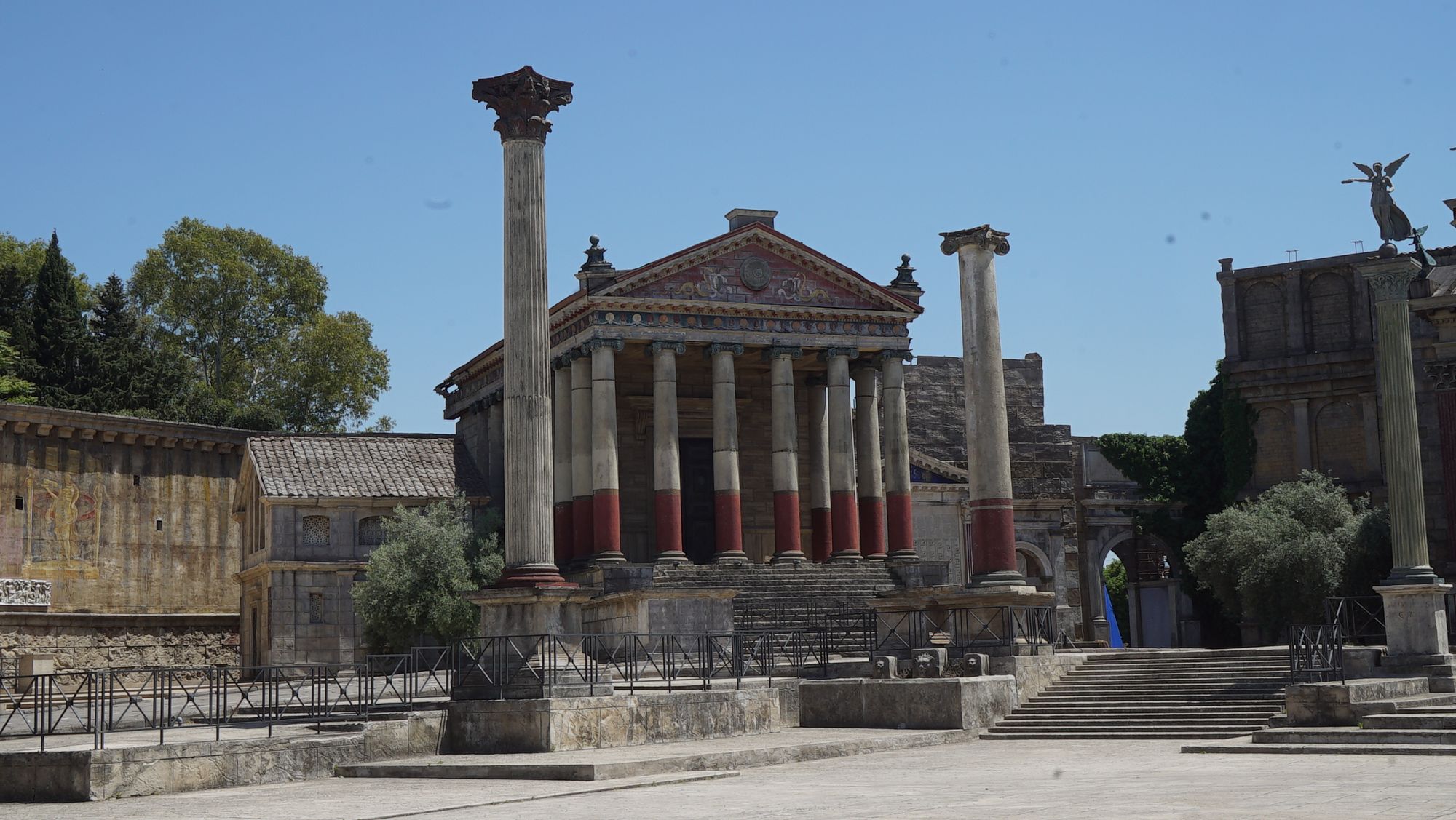
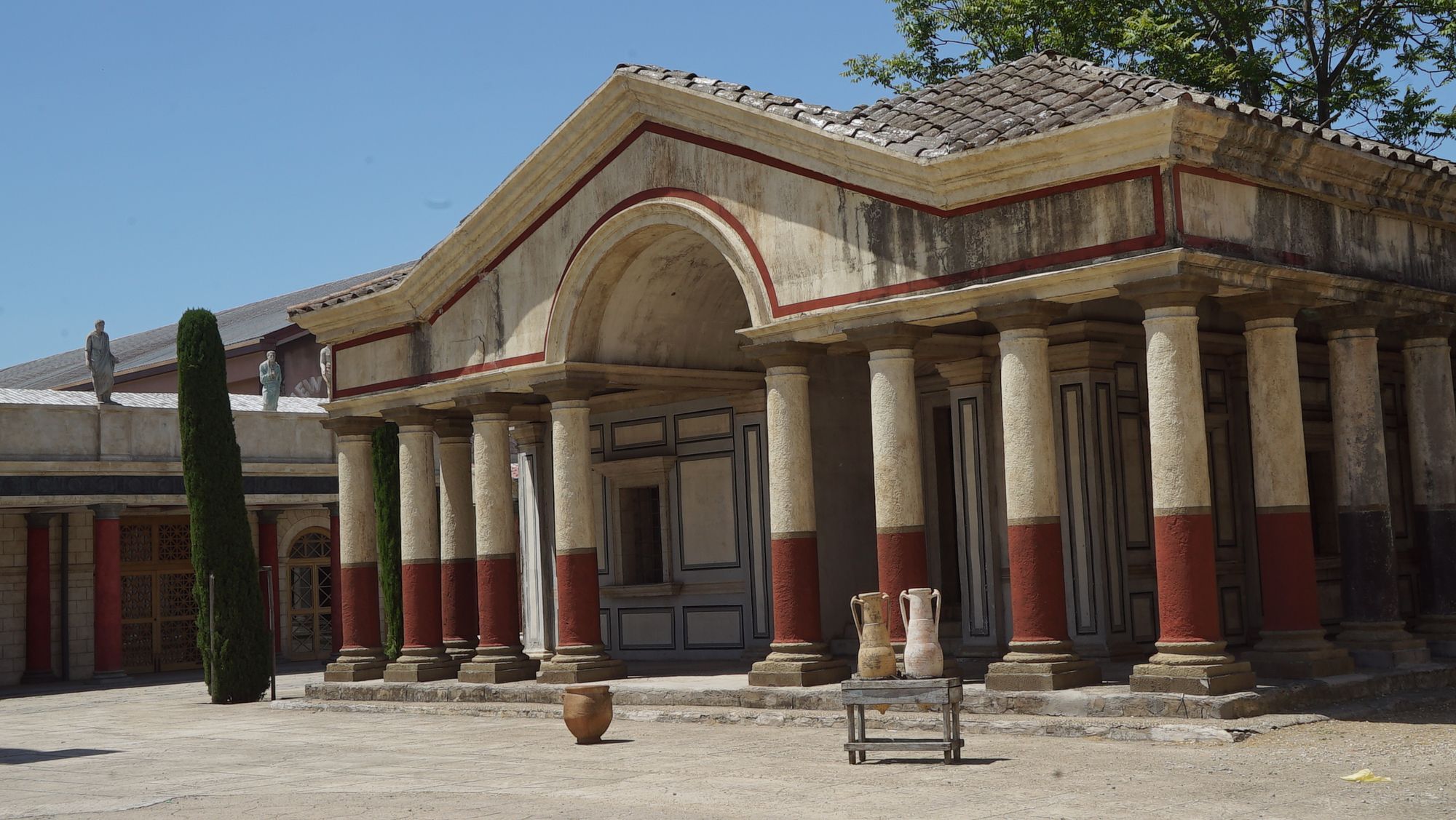
The Temple of Jerusalem
This set was designed by Francesco Frigeri (known for his work on Mel Gibson’s The Passion of The Christ) for the film, The Young Messiah, which was directed by Cyrus Nowrasteh in 2016.
"In creating the Temple, Frigeri favoured broad creative freedom over a strictly philological approach, incorporating different styles, influences and architectures, with inspiration from Babylon, Assyria and Northern Yemen. He focussed in particular on the realistic look of the materials used, on decorative details and sculptural forms to ensure the greatest possible veracity (Cinecittà si Mostra, “Sets: Guided Tours”)."
Florence in the 1400s
This set was designed by Marco Dentici for the TV series, Francesco (Michele Soavi, 2002). It has undergone many modifications over the years in order to provide the backdrop for a range of historical eras, such as: 15th century Tuscany for Amici miei – Come tutto ebbe inizio directed by Neri Parenti, the famous balcony scene for Carlo Carlei’s adaptation of Romeo and Juliet, a 17th century Italian borgo for the Netflix show La luna nera directed by Francesca Comencini, and contemporary Africa for Checco Zalone’s Tolo Tolo (Cinecittà si Mostra, “Sets: Guided Tours”).
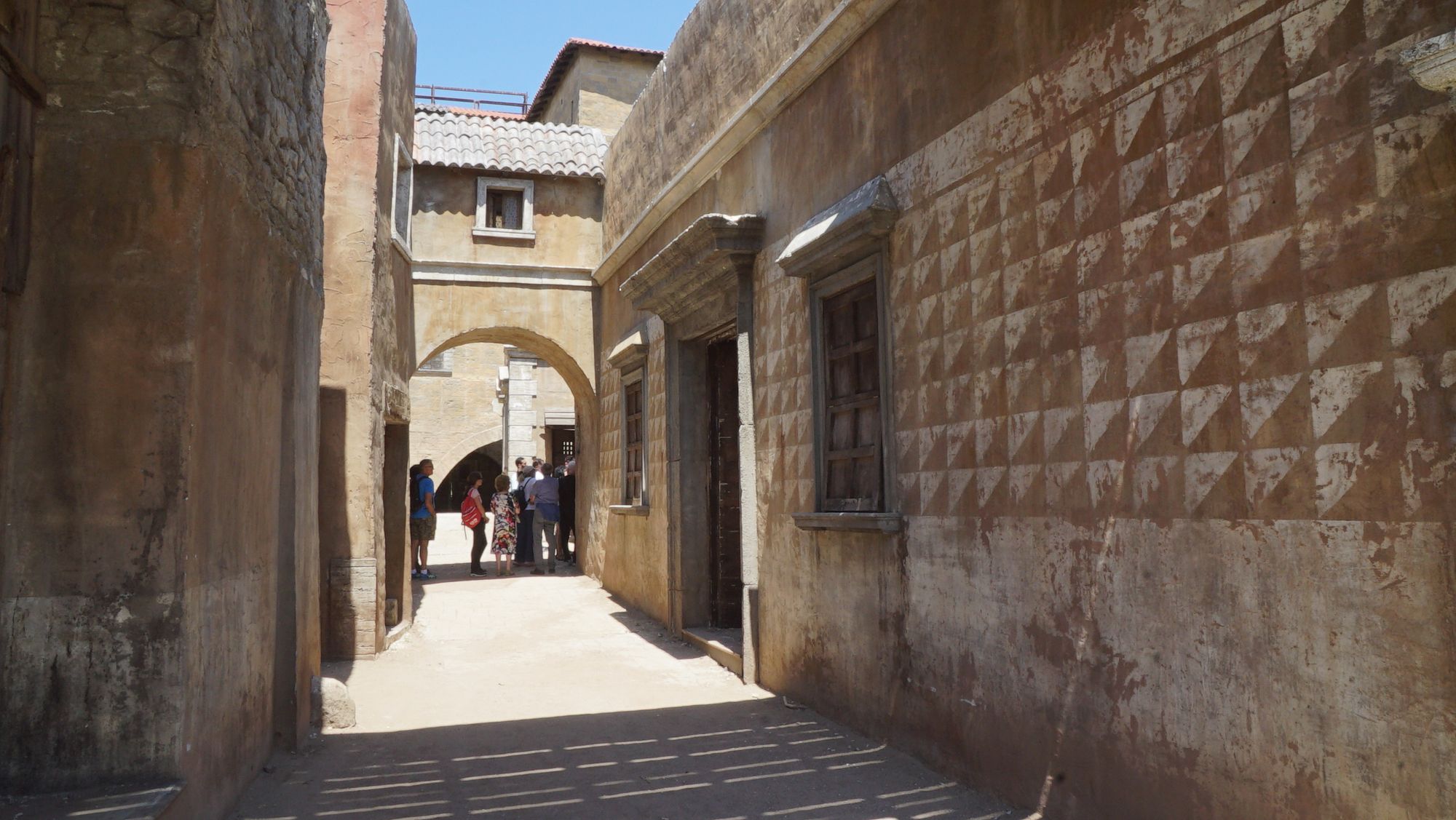
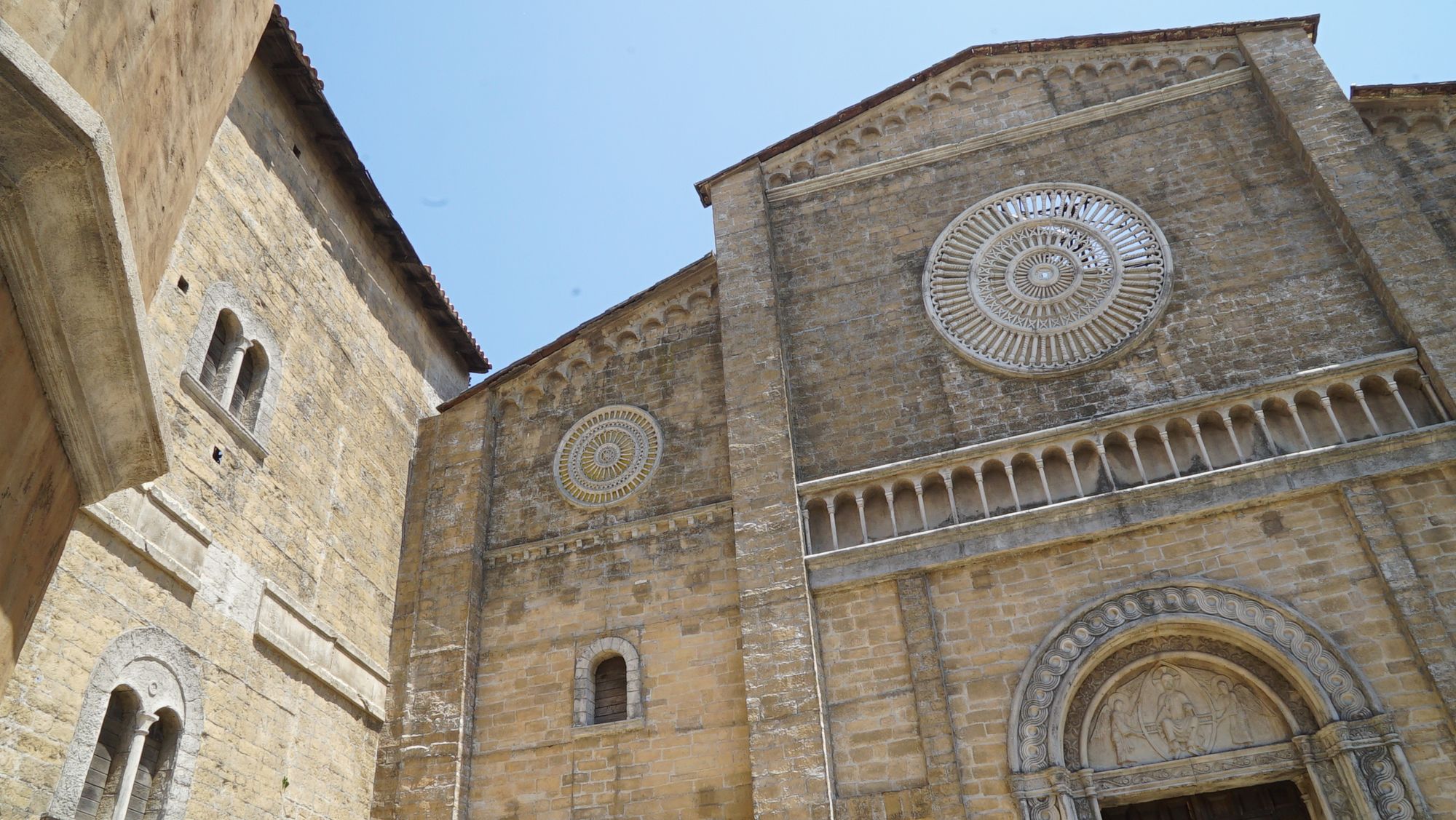
In addition to touring these sets, visitors also have the opportunity to view the studio’s giant water tank, which was notably used to create the New York harbour in Martin Scorsese’s Gangs of New York (2002).
2) Cinecittà si Mostra (Cinecittà Shows Off)
Once the tour of the exterior sets was complete, I was able to roam around the several exhibitions that are housed onsite at my own pace. Located in the Presidential Building (Palazzina Presidenziale), you can find the Cinecittà si Mostra exhibition, which arranges a thorough overview of the history of the Roman studio as well as the industry of cinema itself. It is comprised of three distinct sections:
Shooting at Cinecittà
As you enter the exhibition, you will find displays that highlight the most significant productions that have contributed to the legend of Cinecittà and the history of cinema more broadly. This section of the exhibition draws on a wide range of films––such as, wartime propaganda films, Neorealist cinema, and Hollywood productions––and you will find a curated selection of images, videos, interviews and original costumes once worn by film stars.
Backstage – An Educational Route Through Cinecittà
Following the “Shooting at Cinecittà” section, you will be led into the second part of the exhibition, titled: “Backstage – An Educational Route Through Cinecittà”. This section of the exhibition is an interactive and educational overview of the world of movie-making.
This overview is divided across six rooms, each dedicated to a key aspect of the filmmaking process, namely: directing, screenwriting, sound, costume, special effects, and the green screen. Drawing on examples from films shot at Cinecittà, you will find technical information, anecdotes, multimedia content, and interactive elements in each of these rooms.
Submarine S-33
At the end of the “Cinecittà si Mostra” exhibit, visitors will find themselves inside an American S-33 submarine. This set was constructed for Jonathan Mostow’s film U-571 (2000), a fictional film set during World War II that depicts the United States Navy attempting to capture an Enigma decoder from a German submarine.
3) The Fellini Exhibition
Also included in the “Cinecittà si Mostra” initiative is the permanent exhibition “Felliniana: Ferretti Dreams Fellini”. This exhibition is dedicated to the iconic Italian director Federico Fellini who––having made many films at Cinecittà including La Dolce Vita (1960) and Casanova (1976)––had a long-standing association with the studio and held it in high regard.
The exhibition was created by production designer Dante Ferretti, who was one of the architects behind Fellini’s visions, and Francesca Lo Schiavo, the Academy Award winning set designer and decorator. Divided across three rooms, the exhibition features film posters, a vintage Fiat 125 symbolising "the frequent journeys taken by Fellini and Ferretti together", a room dedicated to Fellini’s City of Women (1980), and another room representing the Fulgor Cinema from Fellini’s childhood in Rimini (Cinecittà si Mostra, “Fellini Building”).
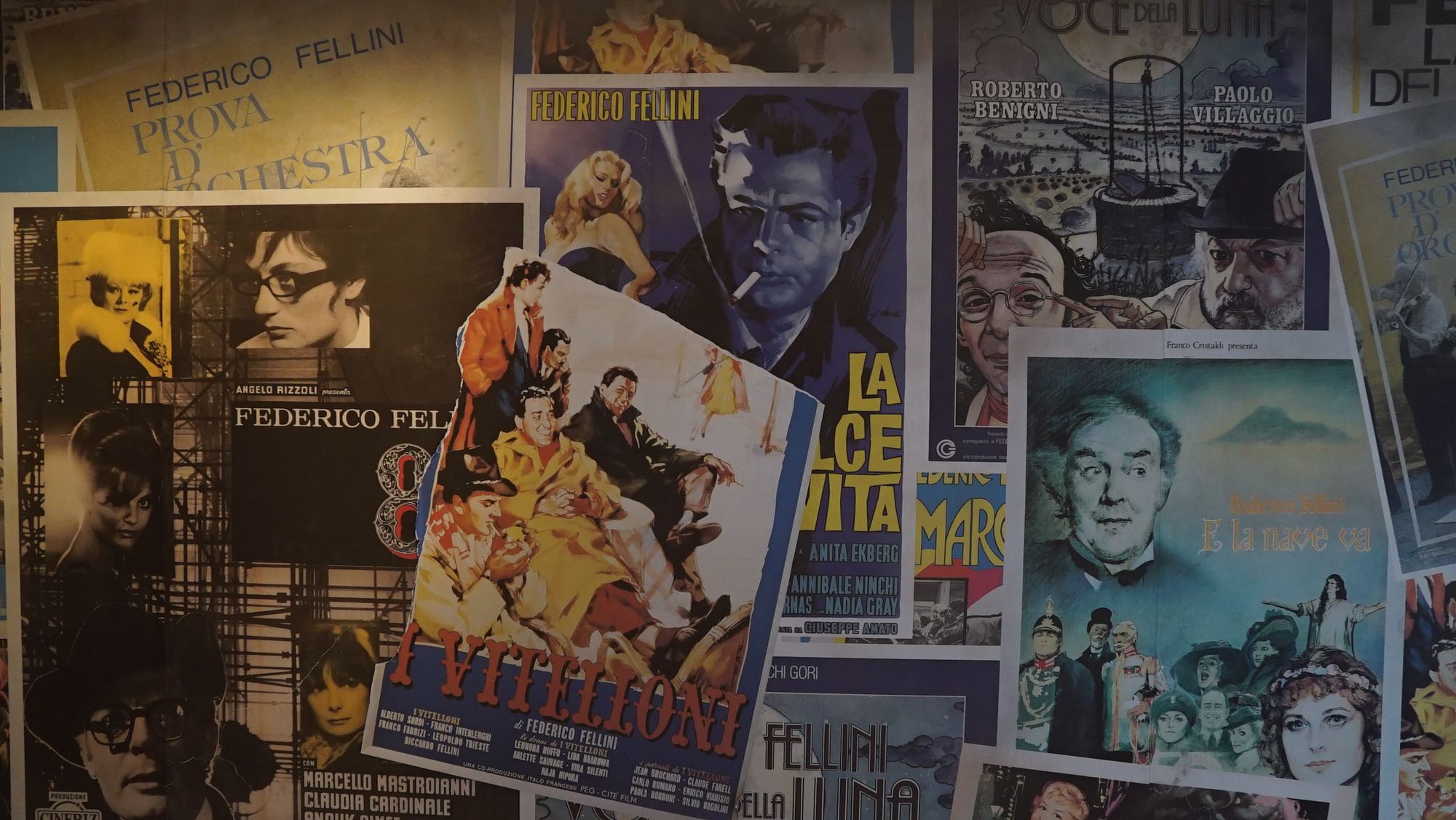
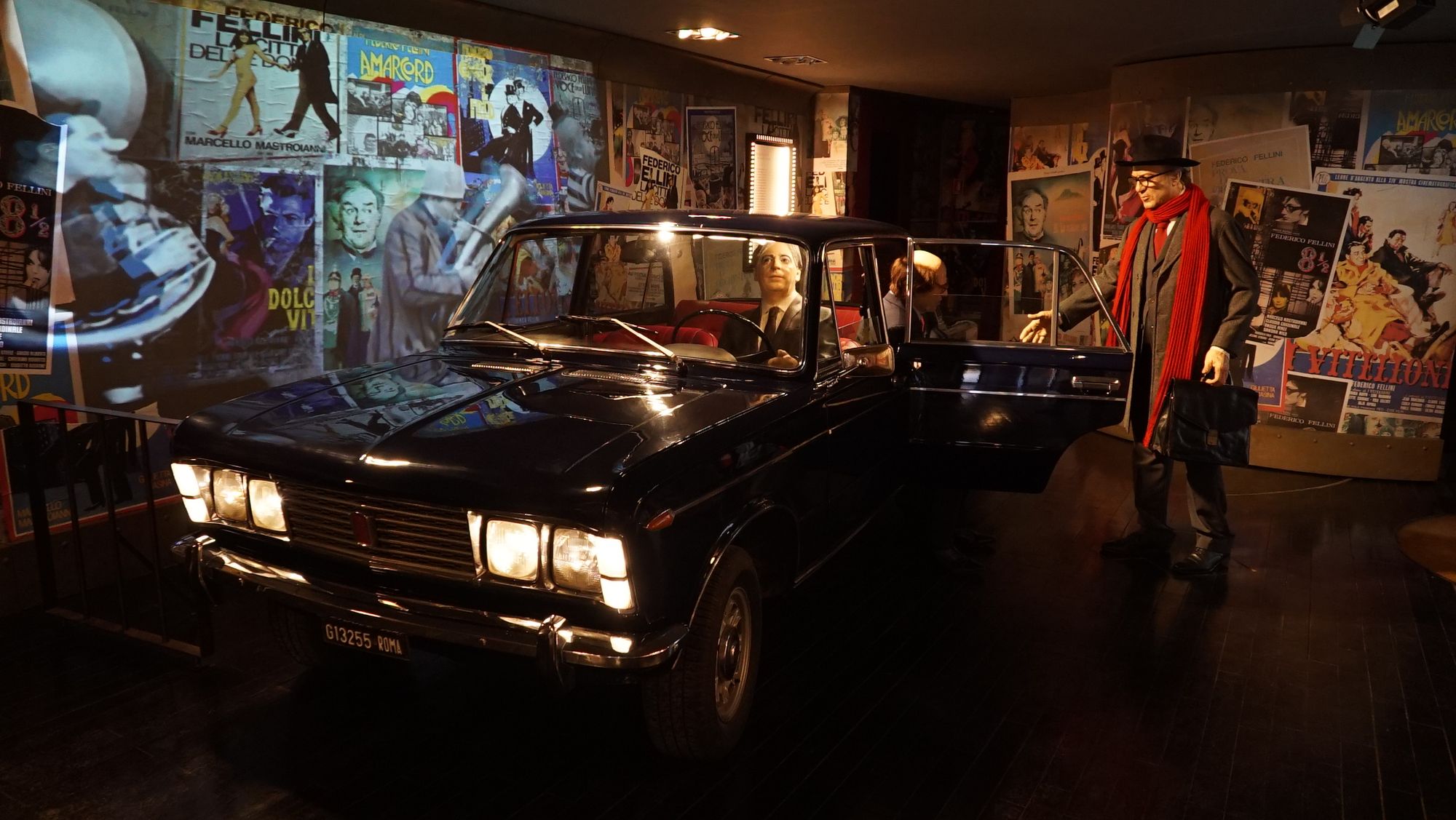
4) Italian Museum of Moving Images
When buying your ticket to Cinecittà, there is a “combined admission” option that will give you access to the Italian Museum of Moving Images in addition to the exhibits and set tour mentioned above. The Museum is also housed within the studio’s walls, and arranges an immersive experience through interactive installations and multi-media displays that unfold over 12 themed rooms.
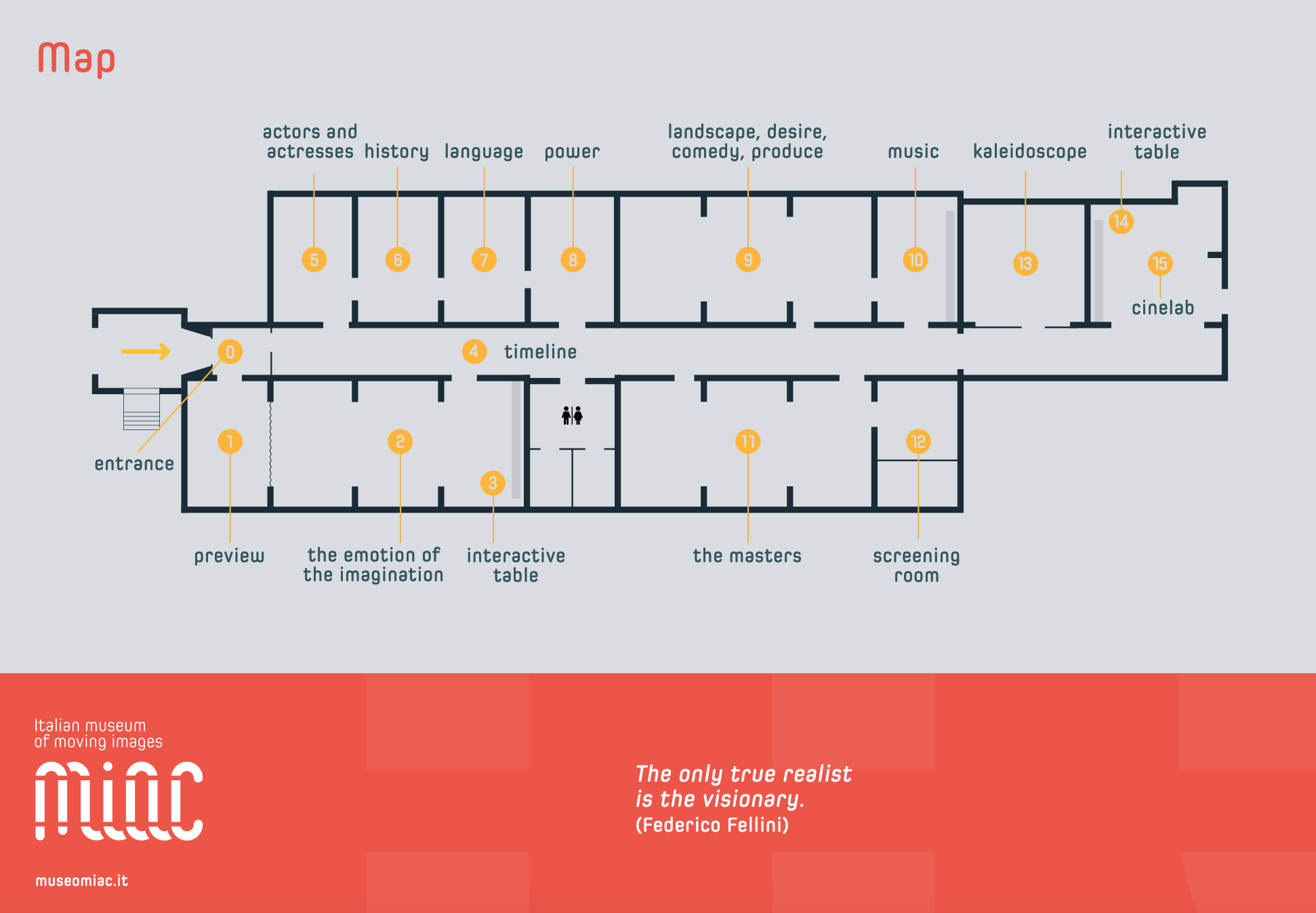
You can find out more about what is on offer at the Italian Museum of Moving Images here, but the rooms that stood out to me most include:
Room 1) The Preview Room – A liminal space permeated by an uncanny soundscape and illuminated by the signs of famous cinemas.
Room 2) The Emotion of the Imagination Room – A space that features mirrored fragments, and the faces of cinemagoers projected onto screens as well as memorable scenes from Italian films. This room is intended to demonstrate cinema’s ability to mirror the emotions of the viewer.
Room 4) The Timeline Corridor – A corridor over 30 metres long where the walls are adorned by animated, graffiti-style infographics about the history of Italian cinema.
Room 5) The Actors and Actresses Room – A room that celebrates icons of the screen.
Room 8) The Power Room – A room that features two cement walls that display archival material and films that show representations of power experienced by Italians over time.
Room 9) The Landscape, Desire, Comedy, Produce Room – A space dedicated to cinema’s multifaceted fascination with the Italian landscape.
Room 13) The Kaleidoscope Room – An entirely mirrored room that contains no dimensional reference points, and features a lightshow and video column in the centre of the room.
